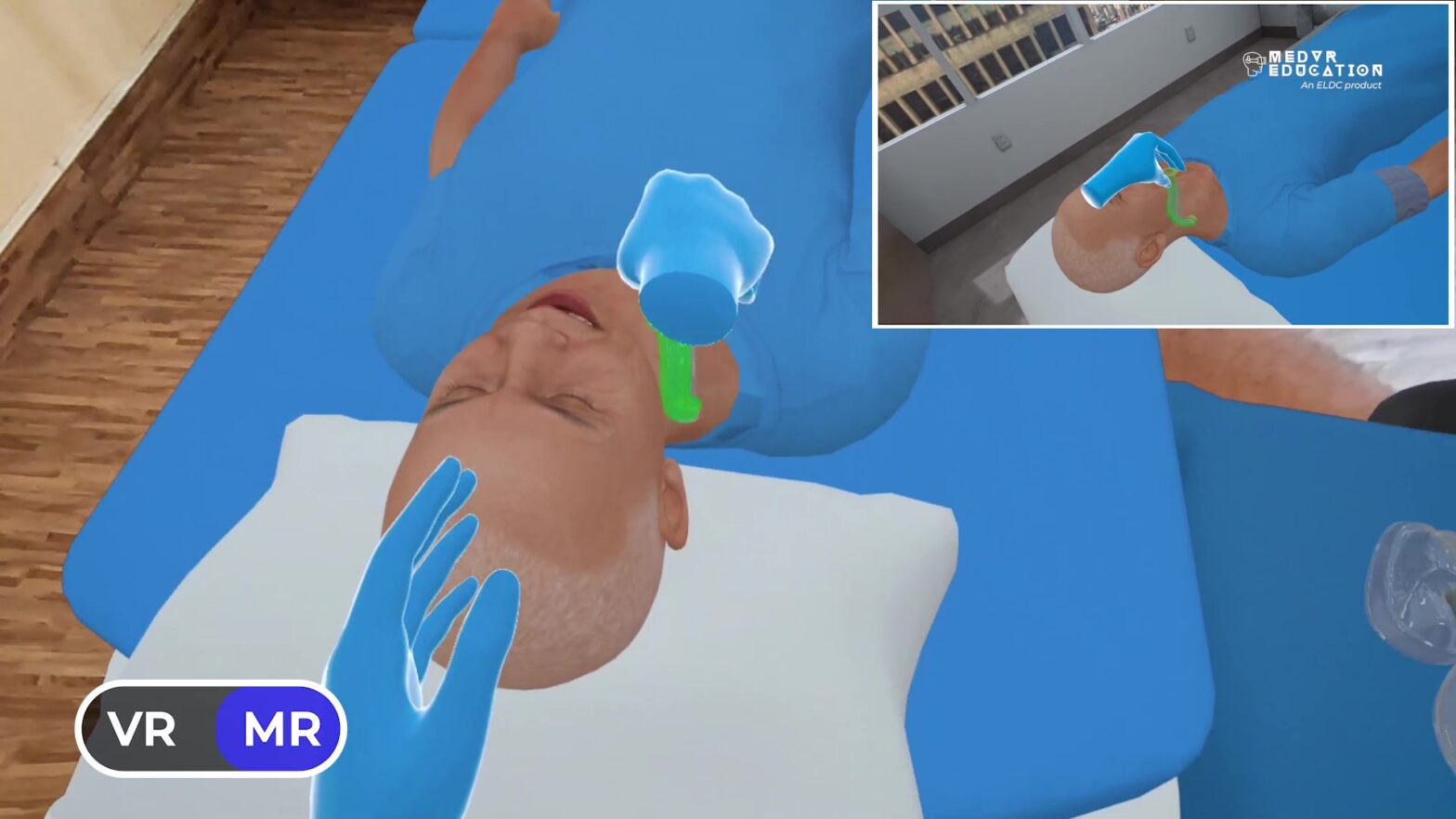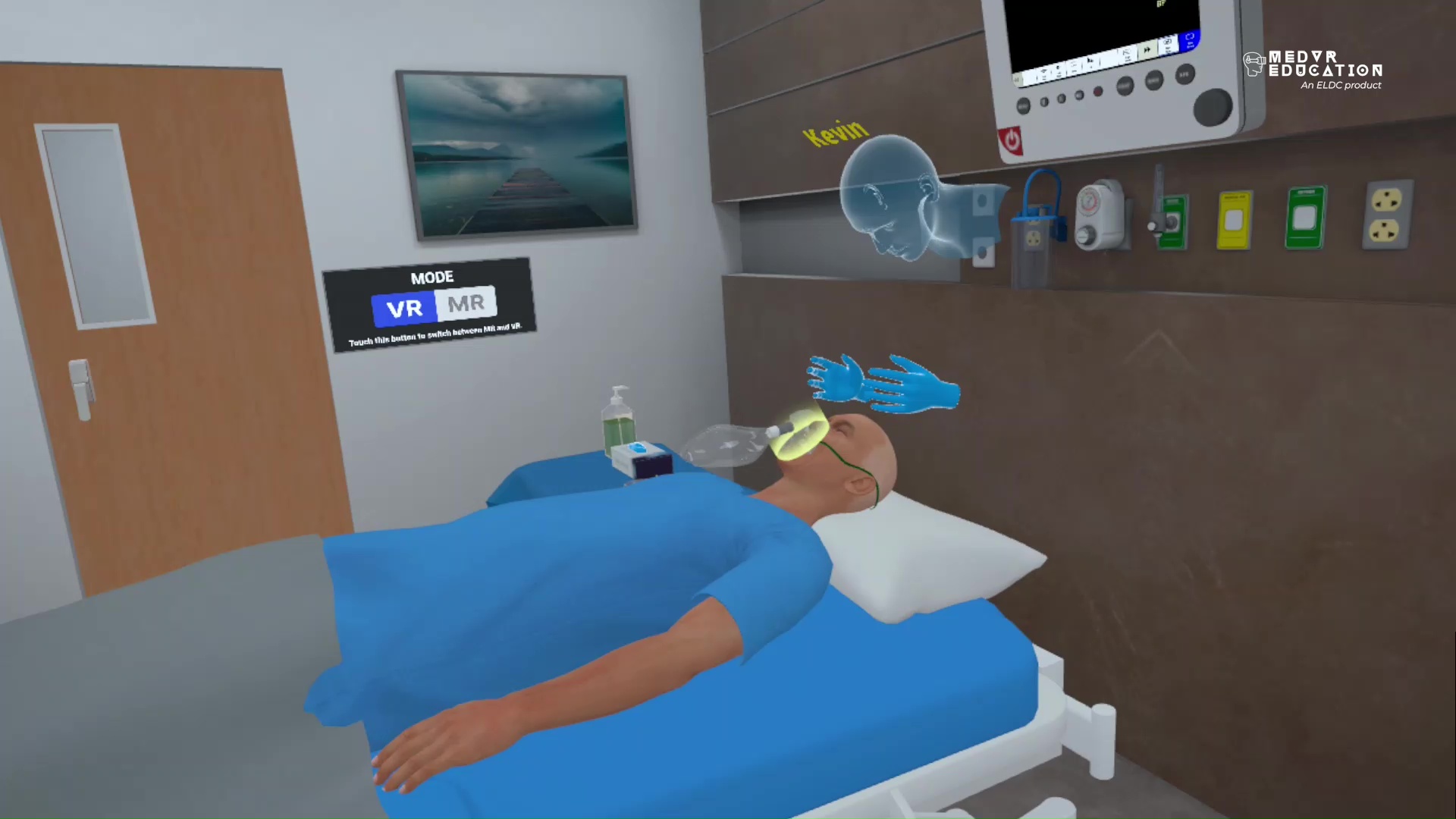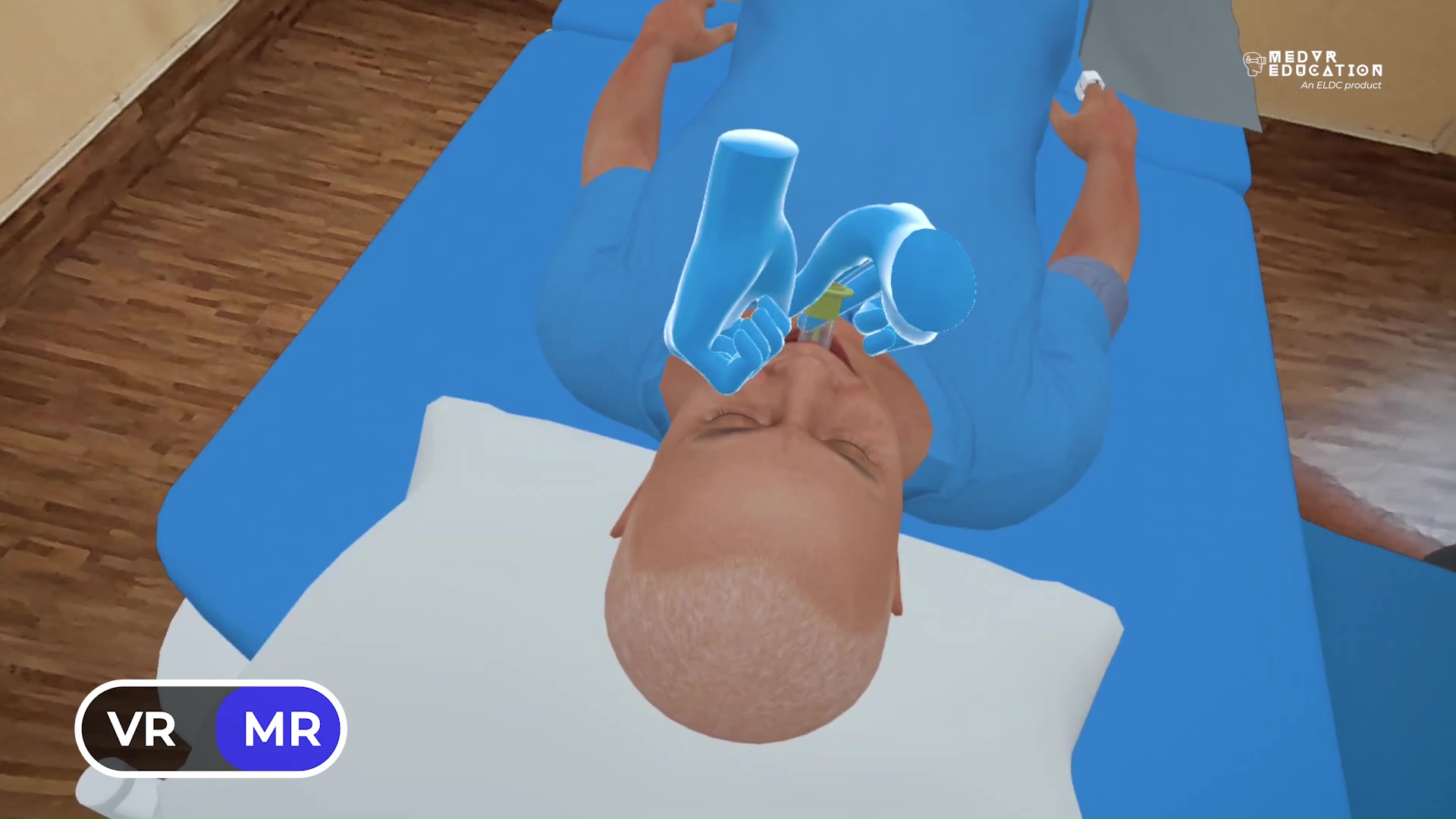Oral Airway Insertion
Oral Airways (oropharyngeal airway) or OPAs are airway adjuncts inserted into an unconscious or minimally responsive patient’s mouth. This is done to maintain airway patency by preventing the tongue from covering the epiglottis. Oral airways form a crucial part of emergency management.
This VR simulation for Oral Airway is designed to help healthcare practitioners practice the procedure of oral airway placement in a safe and controlled virtual environment with a virtual patient. With both training and assessment modes, learners can perform the procedure and assess themselves on their performance.
- Manually opening the airway or mouth using Head tilt-Chin lift
- Employing standard technique of using a manual resuscitation bag (MRB)
- Using clinically approved method for choosing the correct size of an oropharyngeal airway
- Demonstrating standard method of inserting an oropharyngeal airway

- American Heart Association. (2015). Basic Life Support (BLS) Provider Manual. ISBN-13: 978-1616694074.
- American Red Cross. (2019). Advanced First Aid, CPR, and AED. ISBN-13: 978-1584808673.
- Walls, R. M., & Murphy, M. F. (2019). Manual of Emergency Airway Management. ISBN-13: 978-0323528885.
 Multi-player
Multi-player
Sessions Physics-based Interaction
Physics-based Interaction
Core Skills Training

Placement of Oral Airways
As a part of this Oral Airway procedure, the user will begin the procedure by performing hand hygiene. The learner will then measure the oral airway to be inserted into the patient’s mouth. The airway will have to be inserted till it reaches the junction between the hard and soft palate. The learner will ensure the proper placement of the oral airway with it resting along the tongue and the wider part of it resting on the lips or teeth. The procedure will be complete with the learner disposing of the gloves and performing hand hygiene.
All necessary affordances are provided to complete the procedure with efficiency.
Training
With prompts, guidance and affordances learners are hand-held through the process to practice the procedure in a virtual environment with a virtual patient.
- Photorealistic virtual environment
- Physics-based interactions
- Detailed instructions
- Adequate affordances to assist in task completion

Assessment
Test acquired skills to perform the procedures from start to finish without prompts. An incorrect step will take the learner back to the start to start afresh.
- Live scoring
- Instant feedback
- Adequate affordances for efficient performance
- Time tracking to monitor activity completion







